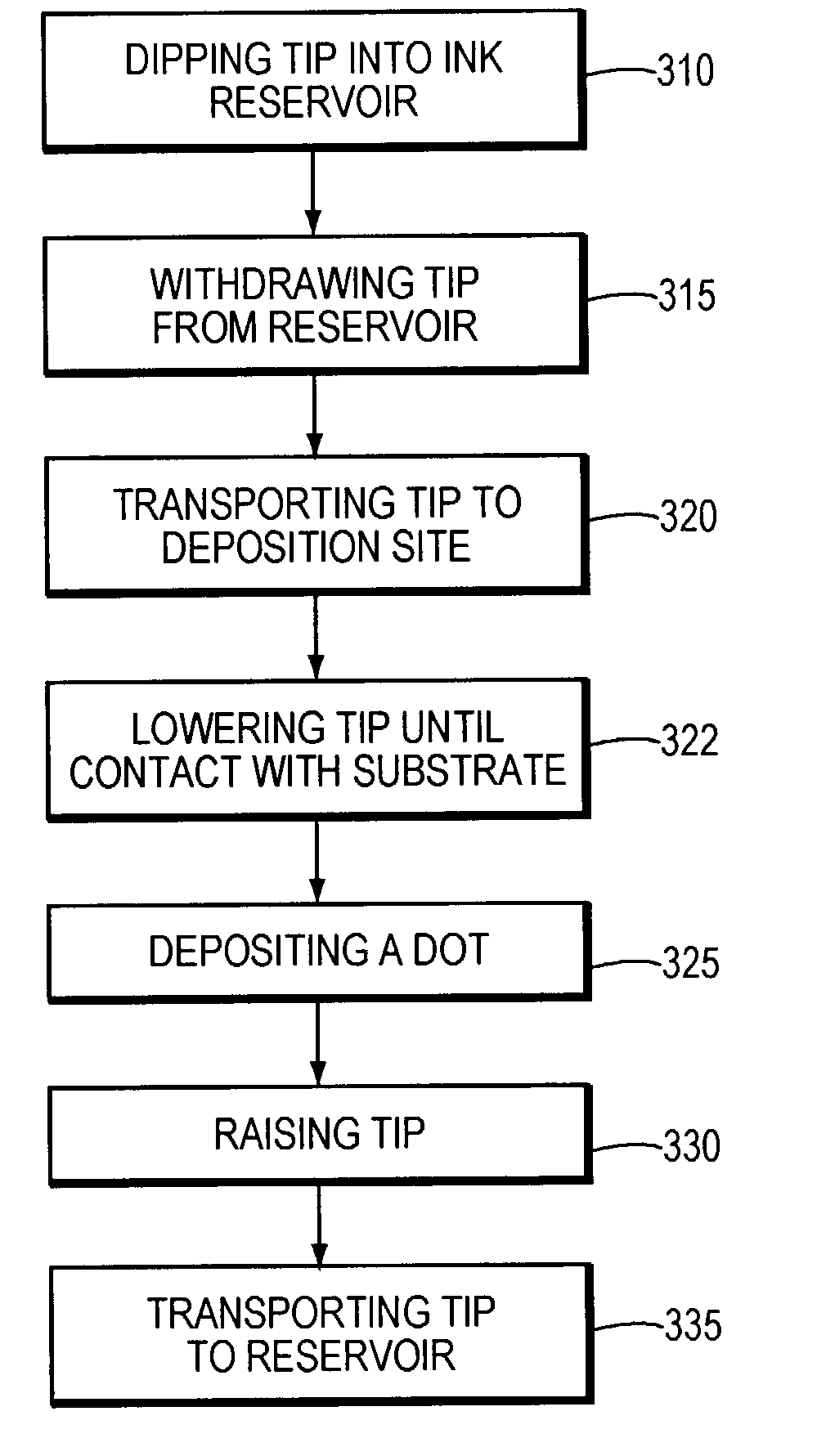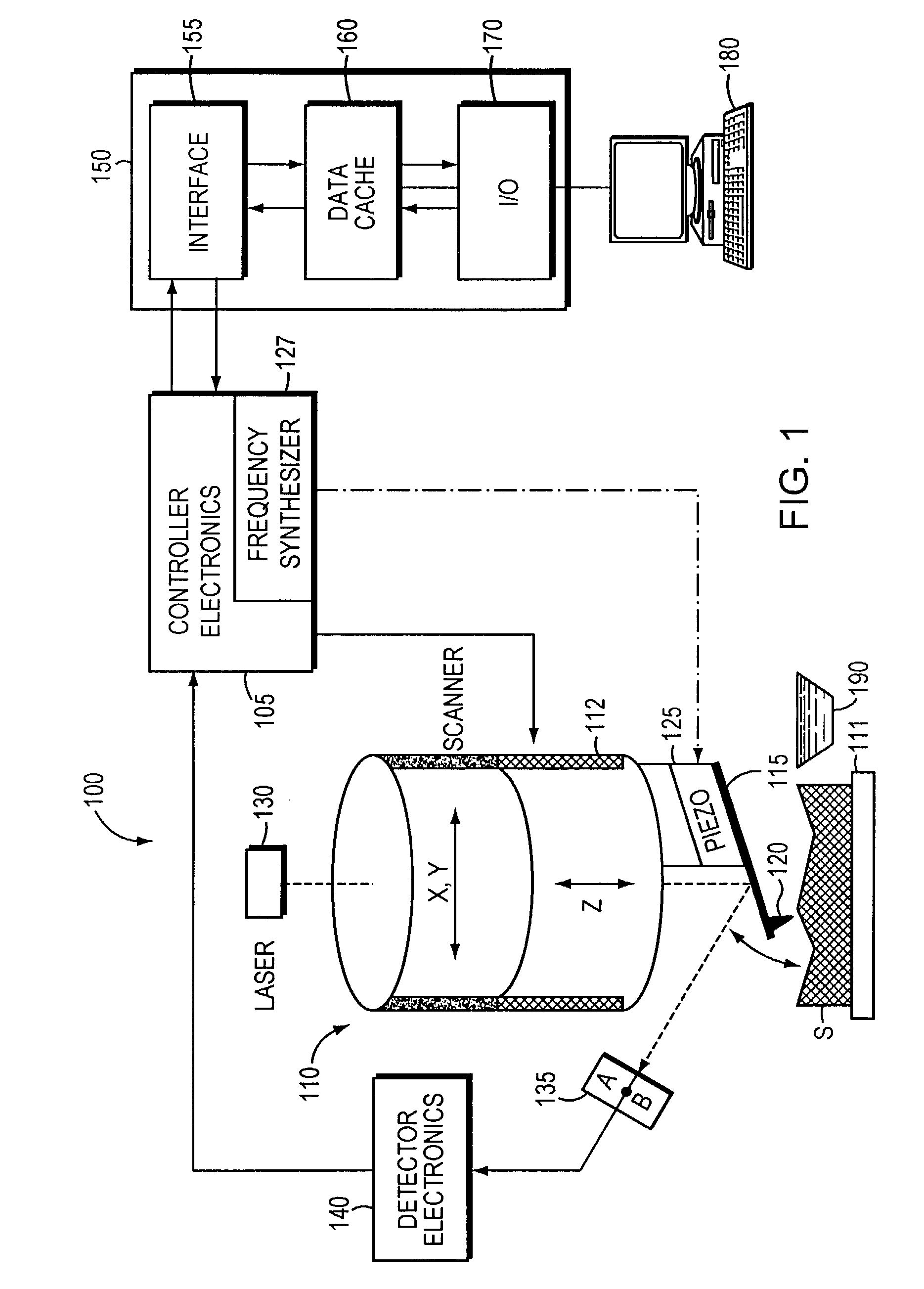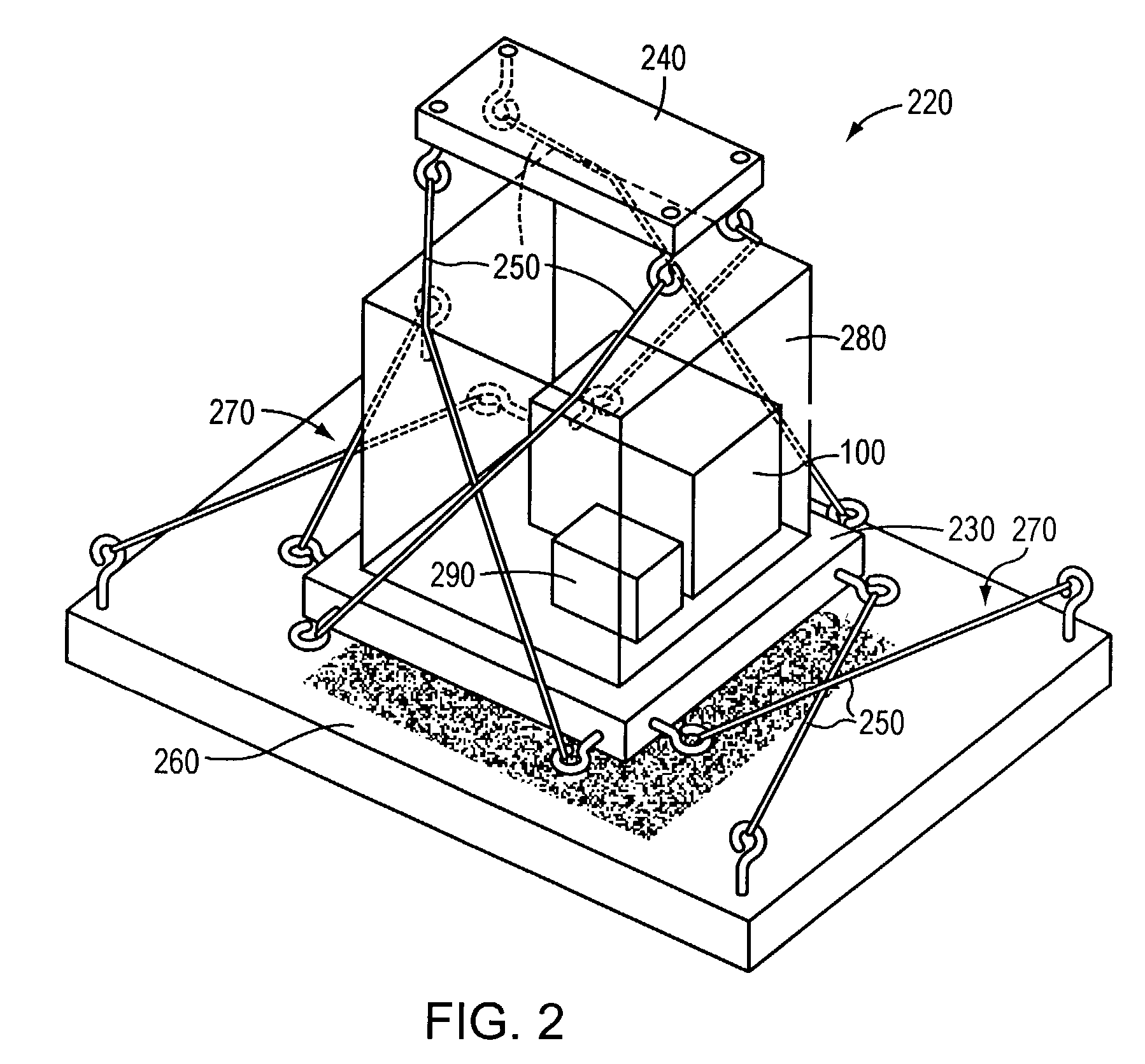Method for direct fabrication of nanostructures
a nanostructure and fabrication method technology, applied in the field of microfabrication, can solve the problems of easy damage to nanoscale devices such as dna and proteins, difficult to produce sub-100 nm structures, and organic materials
- Summary
- Abstract
- Description
- Claims
- Application Information
AI Technical Summary
Benefits of technology
Problems solved by technology
Method used
Image
Examples
Embodiment Construction
[0051]The nanoassembly method of the invention provides for the deposition of planar, multi-layer, and three-dimensional nanostructures. In particular, the nanoassembly system can be used for the fabrication of a number of basic canonical structures including lines, dots, and columns. These canonical structures can be combined and adjacently deposited laterally and / or vertically to form complicated and useful structures, devices, and patterns.
[0052]Referring to FIG. 1, in one embodiment, a nanoassembly apparatus 100 in accordance with the invention includes a controller 105 that operates an AFM head 110 in three dimensions over the surface of a substrate S disposed on top of an adjustable substrate positioning stage 111. As illustrated in FIG. 1, the surface of substrate S extends in the (x,y) plane, while movement toward and away from the surface occurs along the z axis. A transport mechanism may execute movement along the three axes using a series of independently operable piezo e...
PUM
| Property | Measurement | Unit |
|---|---|---|
| Width | aaaaa | aaaaa |
| Width | aaaaa | aaaaa |
| Force | aaaaa | aaaaa |
Abstract
Description
Claims
Application Information
 Login to View More
Login to View More - R&D
- Intellectual Property
- Life Sciences
- Materials
- Tech Scout
- Unparalleled Data Quality
- Higher Quality Content
- 60% Fewer Hallucinations
Browse by: Latest US Patents, China's latest patents, Technical Efficacy Thesaurus, Application Domain, Technology Topic, Popular Technical Reports.
© 2025 PatSnap. All rights reserved.Legal|Privacy policy|Modern Slavery Act Transparency Statement|Sitemap|About US| Contact US: help@patsnap.com



